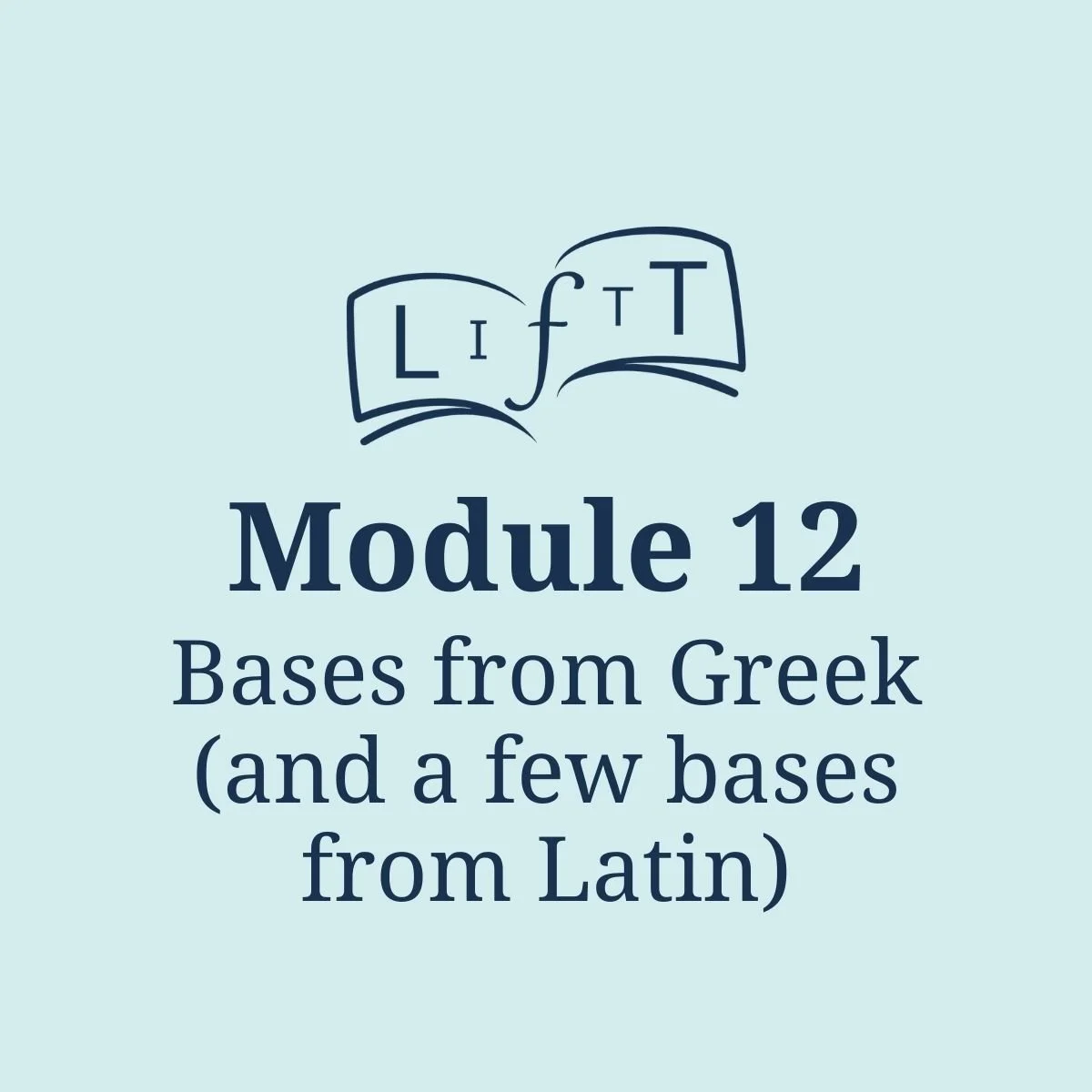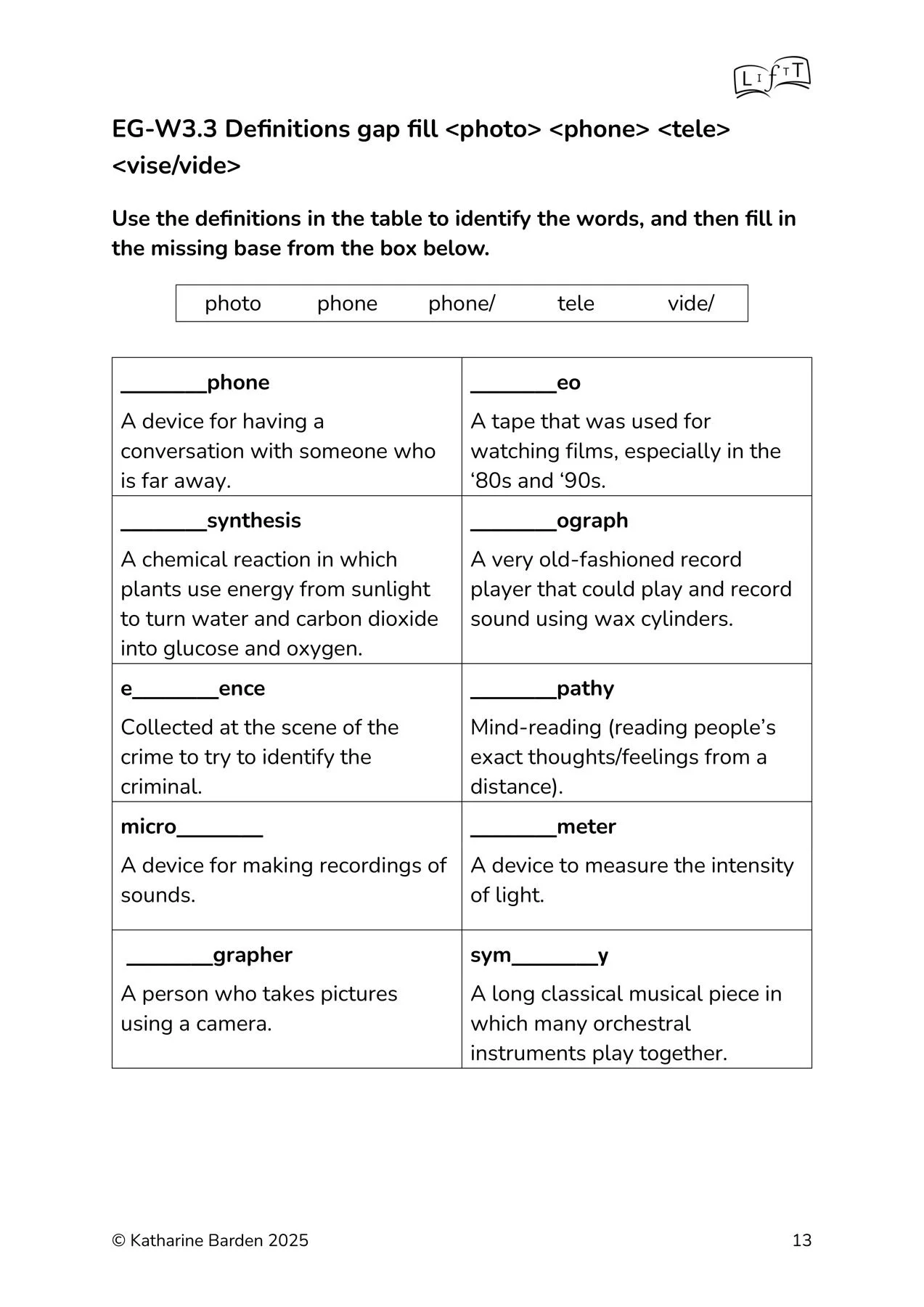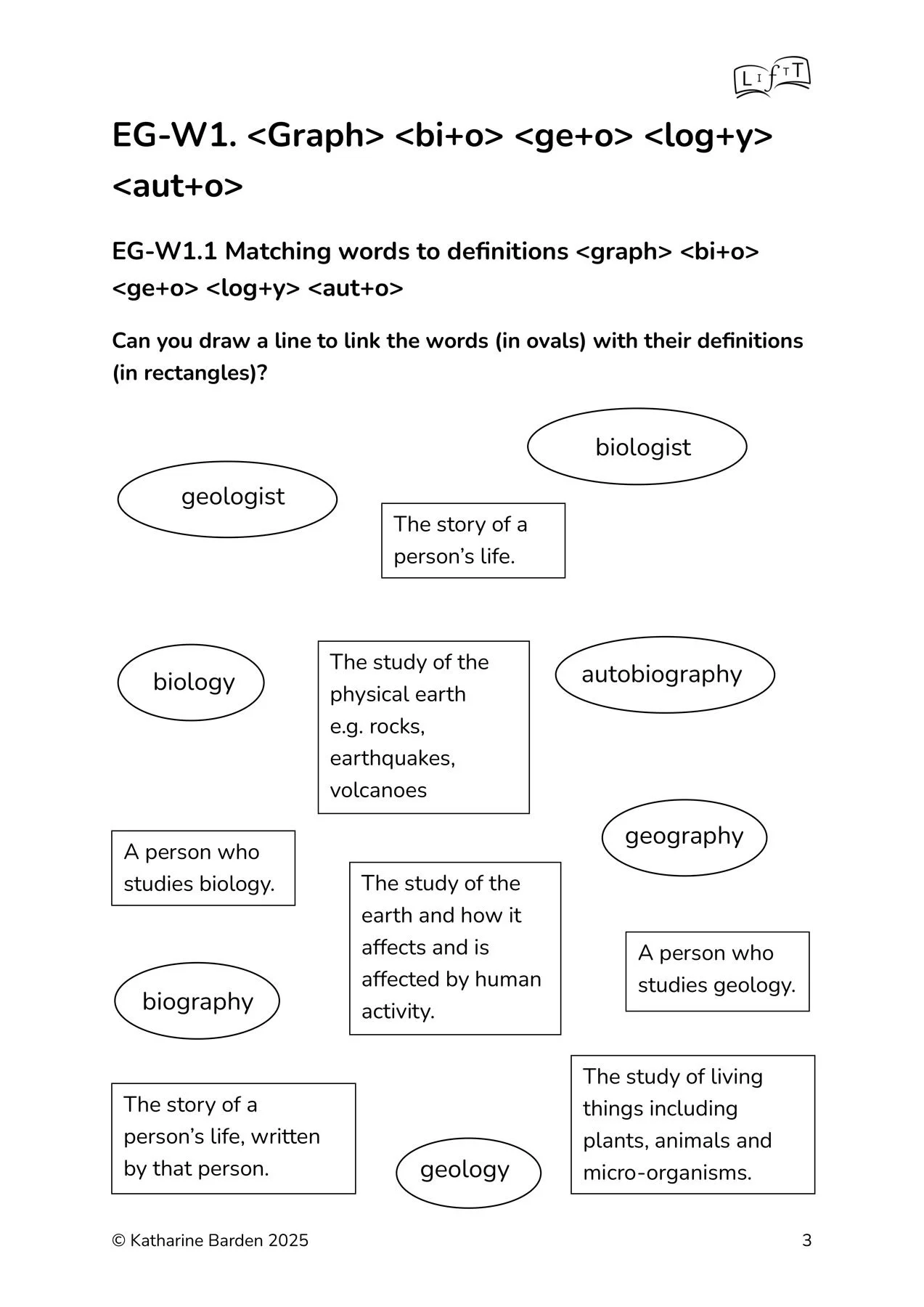This etymology module is intended for students who would benefit from expanding their vocabulary and using more academic language
Overview
Bases from Greek (and a few bases from Latin) teaches students the meaning of various bases that derive from Greek and Latin, and familiarises students with vocabulary that includes these bases.
Words with Greek bases tend to be used for scientific or technical language, so understanding Greek bases helps students to remember and spell these technical words. For example, knowing that <graph> means “to write or draw” will help students to realise why /f/ is spelled as <ph> in graph, graphic, autobiography and geography, as well as giving an insight into the meaning of these words.
Students enjoy spotting the connections between words, and find it rewarding to work with vocabulary that would often be considered too difficult for them.
Step-by-step guidance for teaching Bases from Greek (and a few bases from Latin) is available in the Teaching Manual.
This etymology module is intended for students who would benefit from expanding their vocabulary and using more academic language
Overview
Bases from Greek (and a few bases from Latin) teaches students the meaning of various bases that derive from Greek and Latin, and familiarises students with vocabulary that includes these bases.
Words with Greek bases tend to be used for scientific or technical language, so understanding Greek bases helps students to remember and spell these technical words. For example, knowing that <graph> means “to write or draw” will help students to realise why /f/ is spelled as <ph> in graph, graphic, autobiography and geography, as well as giving an insight into the meaning of these words.
Students enjoy spotting the connections between words, and find it rewarding to work with vocabulary that would often be considered too difficult for them.
Step-by-step guidance for teaching Bases from Greek (and a few bases from Latin) is available in the Teaching Manual.





